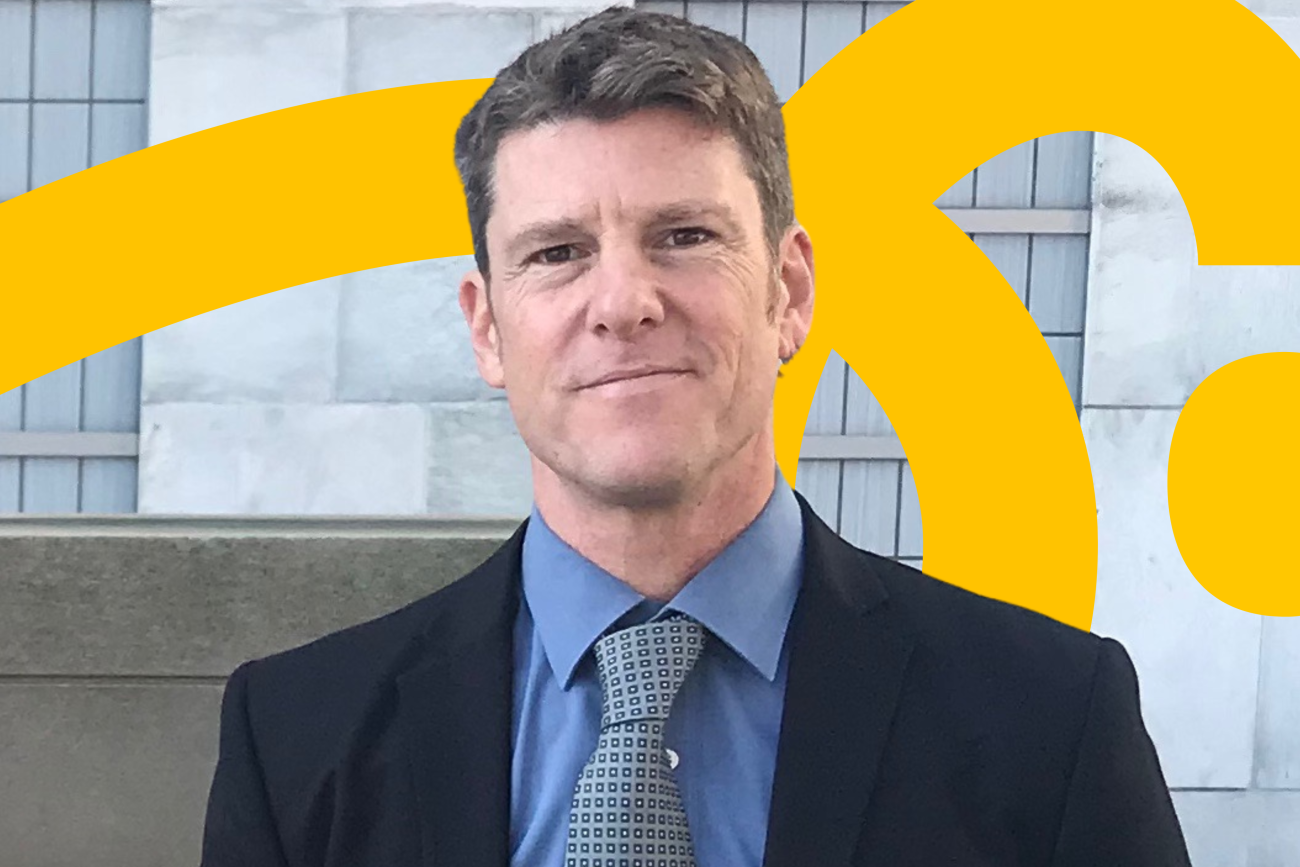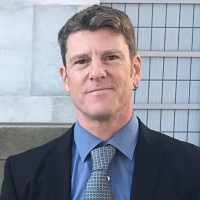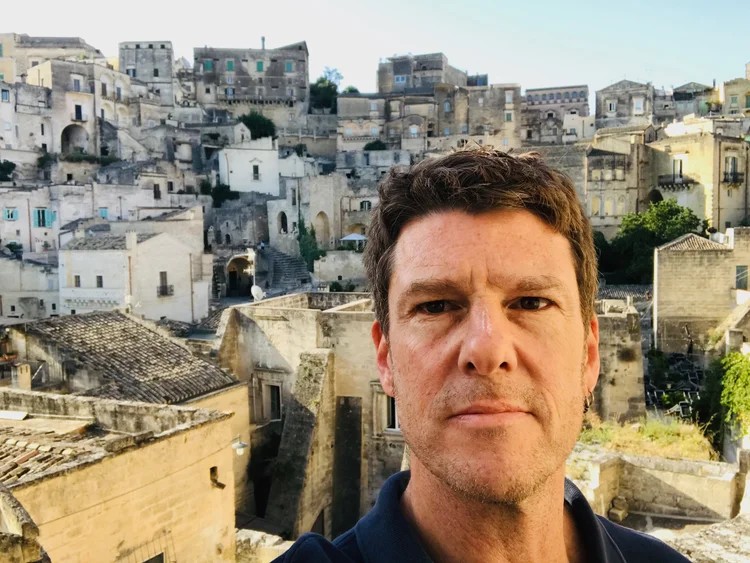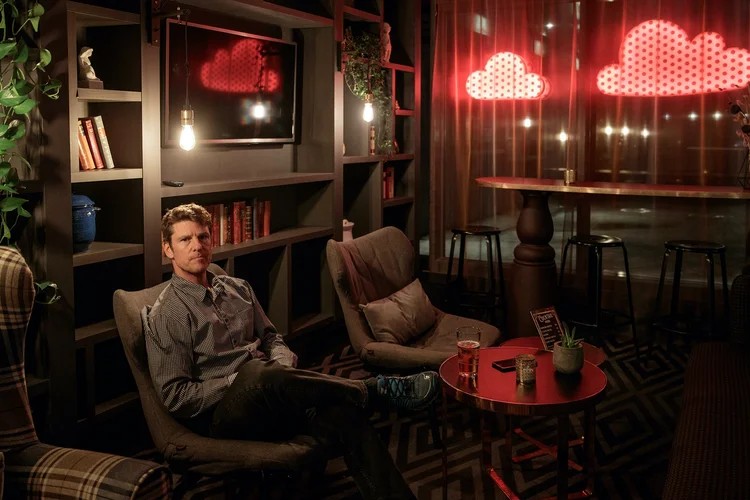Future By Design Talks with Jared Bloch
Humanitarian Advocacy and Communications Specialist
Please introduce yourself.
My name is Jared Bloch. I have been an independent advocacy and communications consultant in Geneva, Switzerland, for the past 14 years. Most recently, I was Head of Communications and Network Administration for the International Campaign to Ban Landmines and Cluster Munition Coalition, where I worked on projects with Future by Design.
My background is a bit broader, as I began my career working with refugees and migrants in the United States, running a rescue settlement program. After that, I worked internationally in refugee resettlement with the United Nations High Commissioner for Refugees, which led me to begin working in the international arena with different UN Agencies and international organizations. I've done a lot of work around international humanitarian law and mine action, and I worked with Future by Design when I was with the International Labor Organization.
If I look at my 25–30-year career trajectory, there's a common thread. I started working in and around issues of Human Rights and access to services - ensuring people had access to information and support to access their rights. As I went forward in my career, I applied what I had learned about refugee rights to other areas. Still, there was quite an education learning about some of the interconnected web of disability rights. I also worked a lot in the field of mine action and labour rights and the rights of young people. The common thread throughout all of it was the avenues to knowledge. Oftentimes, people are smart at the base, so they have an intuitive sense and a drive to get information, but sometimes, there are physical barriers that stand in the way, political barriers, and other reasons keeping people from accessing this information. So, I focused on opening those doors and clearing the pathways so that people have the tools to grab this information and access the rights that inherently belong to them.
My background is a bit broader, as I began my career working with refugees and migrants in the United States, running a rescue settlement program. After that, I worked internationally in refugee resettlement with the United Nations High Commissioner for Refugees, which led me to begin working in the international arena with different UN Agencies and international organizations. I've done a lot of work around international humanitarian law and mine action, and I worked with Future by Design when I was with the International Labor Organization.
If I look at my 25–30-year career trajectory, there's a common thread. I started working in and around issues of Human Rights and access to services - ensuring people had access to information and support to access their rights. As I went forward in my career, I applied what I had learned about refugee rights to other areas. Still, there was quite an education learning about some of the interconnected web of disability rights. I also worked a lot in the field of mine action and labour rights and the rights of young people. The common thread throughout all of it was the avenues to knowledge. Oftentimes, people are smart at the base, so they have an intuitive sense and a drive to get information, but sometimes, there are physical barriers that stand in the way, political barriers, and other reasons keeping people from accessing this information. So, I focused on opening those doors and clearing the pathways so that people have the tools to grab this information and access the rights that inherently belong to them.
Did you start out wanting to be in the humanitarian space, or did you start in communications and fall into that space?
When I started my career, I had some very wise supervisors. One of them, when I first began working with the refugees and migrants and in my hiring process, looked at me and said, are you one of those people who claim to help people, or are you a person who likes to do things that are interesting for you and find gratification and satisfaction for yourself in this type of work?
That was a leading question, but that set the tone for me. I came to this work because I am curious about these issues that prevent people from accessing their rights and, conversely, about what happens when you empower somebody with information and tools about how they can go after these objectives. It's the story of human intelligence and the story of human drive. And that's what brings me to this work.
That was a leading question, but that set the tone for me. I came to this work because I am curious about these issues that prevent people from accessing their rights and, conversely, about what happens when you empower somebody with information and tools about how they can go after these objectives. It's the story of human intelligence and the story of human drive. And that's what brings me to this work.
In Communications, you get to talk to people, hear their amazingly inspiring and sometimes heartbreaking stories, and then sit down and figure out a way to translate them so that the general public and others can understand and take action. That's what fascinates me about the work, keeps me at it, and inspires me.
Can you tell us about one of your favourite projects you worked on in the last few years?
The first one is a capacity-building project I worked on very recently. It was about talking to field partners, and in this case, these were grassroots organizations that I was dealing with primarily to assess their immediate needs and establish how we could help professionalize their organizations. They are already very professional, but they needed to add a few elements to gain traction, gain an audience, and be heard and present their positions better. I got to sit down with them, do an initial assessment, and then helped structure a pilot project on building sustainability in their work. So that project was super interesting and gratifying.
The second project was related to Future by Design, and that was the work of the International Labor Organization, Safe Youth@Work. It was a multimedia project, and it was talking to young people, first of all, understanding how they see occupational safety and health, secondly, seeing what they would find interesting in terms of points to emphasize, stories that they wanted to tell, and then how they wanted to tell it. When you're dealing with an intergovernmental organization, you have all of these very real constraints about what you can say or do; the work has to conform to some agreed guidelines; this is what multilateralism is about, and within those parameters, the feedback, guidance and the end products from Future by Design were quite insightful, innovative, effective and dynamic. This ended up exhibiting itself in a range of music and short graphic animations and stories that people submitted for this contest, which was incredibly fun and interesting.
The second project was related to Future by Design, and that was the work of the International Labor Organization, Safe Youth@Work. It was a multimedia project, and it was talking to young people, first of all, understanding how they see occupational safety and health, secondly, seeing what they would find interesting in terms of points to emphasize, stories that they wanted to tell, and then how they wanted to tell it. When you're dealing with an intergovernmental organization, you have all of these very real constraints about what you can say or do; the work has to conform to some agreed guidelines; this is what multilateralism is about, and within those parameters, the feedback, guidance and the end products from Future by Design were quite insightful, innovative, effective and dynamic. This ended up exhibiting itself in a range of music and short graphic animations and stories that people submitted for this contest, which was incredibly fun and interesting.
As a consultant, what criteria do you use to select what projects you work on?
I think there's a career shift as you start consulting. 14 years ago, the answer was, geez, I got to pay the rent, or I need to do something to keep my wife from asking me what I'm doing today, and then over time, you go to these points - is this something that is truly interesting to me? Is it going to keep my attention, but also, in fairness, to my client? Will I bring 100% plus of my skills and energy to this? I think that's a big one. What's my added value, and am I the person that should be telling this story? That's a really important criterion when looking at rights and access issues.
For example, disability rights and minority rights, oftentim,es there is somebody better to tell that story. And I think about the role I'm being asked to play. Is it a facilitator, or is it telling the story? Oftentimes, I've just said - great, I can do this project. The first thing I will do is have a regional consultation, and then I will select the five best voices to showcase this and vice versa. So those are the key criteria.
For example, disability rights and minority rights, oftentim,es there is somebody better to tell that story. And I think about the role I'm being asked to play. Is it a facilitator, or is it telling the story? Oftentimes, I've just said - great, I can do this project. The first thing I will do is have a regional consultation, and then I will select the five best voices to showcase this and vice versa. So those are the key criteria.
Tell us about a project you did with FBD.
We asked Future by Design to develop new branding thinking, and the second ask was for a rebuild of the organisation's three websites. It is truly a joy today to be at this end of the road to look at those websites as the visual embodiment of that work. It was an incredibly complex project but an incredible learning moment with Future by Design.
We don't always know what we want when we're asking for designs and I have to give the FBD team credit, I think we were told that nicely. You sit down, and you say I want to do this, and a smart design team says it might look like this, or it might look like something else. It's almost like allowing yourself to be amazed or have a sense of wonderment.
My hat is off to Future by Design for being able to take what is presented as a square proposal and come up with a round suggestion, and explain why that might be an attractive option.
With this project, we wanted to change something that had been in place for 20-25 years, so of course, reactions sometimes can be 'Whoa'. This is a bit of risk-taking, and I really welcomed the expertise and inviting sense of wonderment that Future by Design brought to that process. It made it very successful.
We don't always know what we want when we're asking for designs and I have to give the FBD team credit, I think we were told that nicely. You sit down, and you say I want to do this, and a smart design team says it might look like this, or it might look like something else. It's almost like allowing yourself to be amazed or have a sense of wonderment.
My hat is off to Future by Design for being able to take what is presented as a square proposal and come up with a round suggestion, and explain why that might be an attractive option.
With this project, we wanted to change something that had been in place for 20-25 years, so of course, reactions sometimes can be 'Whoa'. This is a bit of risk-taking, and I really welcomed the expertise and inviting sense of wonderment that Future by Design brought to that process. It made it very successful.
One piece of advice you have for younger people entering the space of advocacy and communications?
My first piece of advice is to Listen. I say that because when I'm dealing with younger colleagues and people I am trying to address through a campaign, that's always my advice to myself: Listen first.
This will speak to my age, but the thing to consider is that listening goes both ways. So, absolutely, it's about listening to what a younger audience wants to hear and how they want to hear it. But, it's also that younger audiences have to open their eyes to who they're speaking to. So, I think it's wonderful that there is an emphasis more and more on addressing youth as agents of change for an obvious reason.
If you're younger, you're going to be dealing with and living with the results of that change for years to come. So, be it in humanitarian disarmament or climate change, those voices are essential, and just as I need to be listening, they need to be engaged and aware that they're speaking not only to their youth cohort but also to other people and they also want to have the most impact possible on maybe older change-makers.
This will speak to my age, but the thing to consider is that listening goes both ways. So, absolutely, it's about listening to what a younger audience wants to hear and how they want to hear it. But, it's also that younger audiences have to open their eyes to who they're speaking to. So, I think it's wonderful that there is an emphasis more and more on addressing youth as agents of change for an obvious reason.
If you're younger, you're going to be dealing with and living with the results of that change for years to come. So, be it in humanitarian disarmament or climate change, those voices are essential, and just as I need to be listening, they need to be engaged and aware that they're speaking not only to their youth cohort but also to other people and they also want to have the most impact possible on maybe older change-makers.
My final words of advice would be to don't give up on hope. The more you work, the more hope you get; it's a virtuous cycle.




